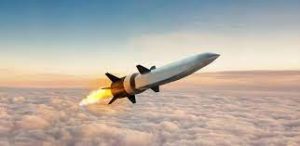Hypersonic Missiles Used By Russia For The First Time Amid Ongoing Ukraine Conflict:

Russia used a hypersonic missile for the first time in the ongoing conflict with Ukraine.
- A hypersonic missile is a weapon system which flies at least at the speed of Mach 5 i.e. five times the speed of sound and is manoeuvrable.
- The manoeuvrability of the hypersonic missile is what sets it apart from a ballistic missile as the latter follows a set course or a ballistic trajectory.
- Thus, unlike ballistic missiles, hypersonic missiles do not follow a ballistic trajectory and can be manoeuvred to the intended target.
- The two types of hypersonic weapons systems are Hypersonic Glide Vehicles (HGV) and Hypersonic Cruise Missiles.
- The HGV are launched from a rocket before gliding to the intended target while the hypersonic cruise missile is powered by air breathing high speed engines or ‘scramjets’ after acquiring their target.
- Hypersonic missiles can enable responsive, long range strike options against distant, defended or time critical threats (such as road mobile missiles) when other forces are unavailable, denied access or not preferred.
- Conventional hypersonic weapons use only kinetic energy i.e. energy derived from motion, to destroy unhardened targets or even underground facilities.
- India is also developing an indigenous, dual capable (conventional as well as nuclear) hypersonic cruise missile as part of its Hypersonic Technology Demonstrator Vehicle Programme and has successfully tested a Mach 6 scramjet in June 2019 and September 2020.
- India operates approximately 12 hypersonic wind tunnels and is capable of testing speeds upto Mach 13.




